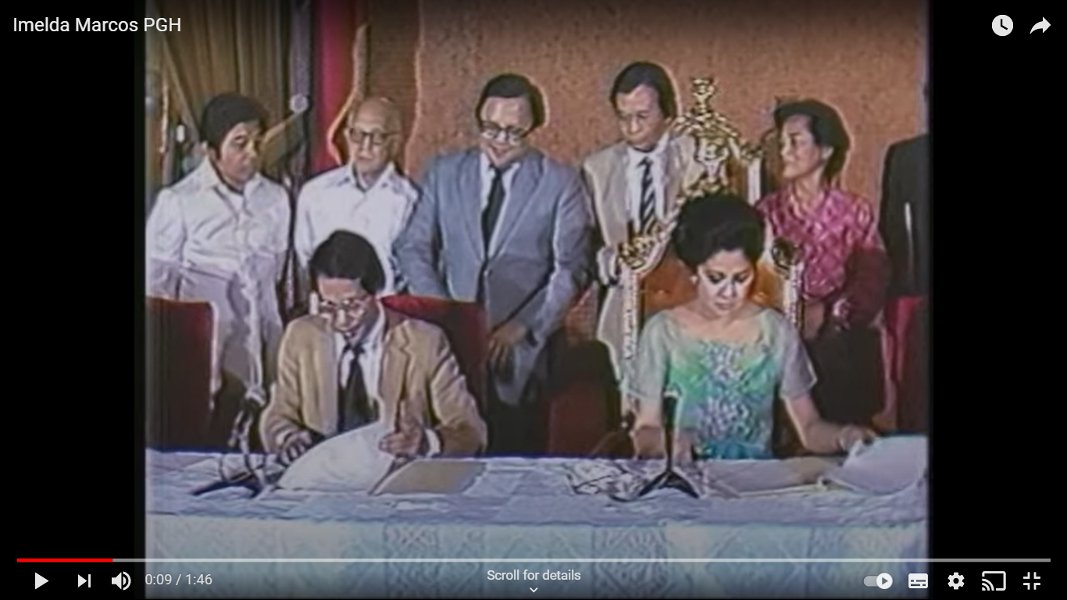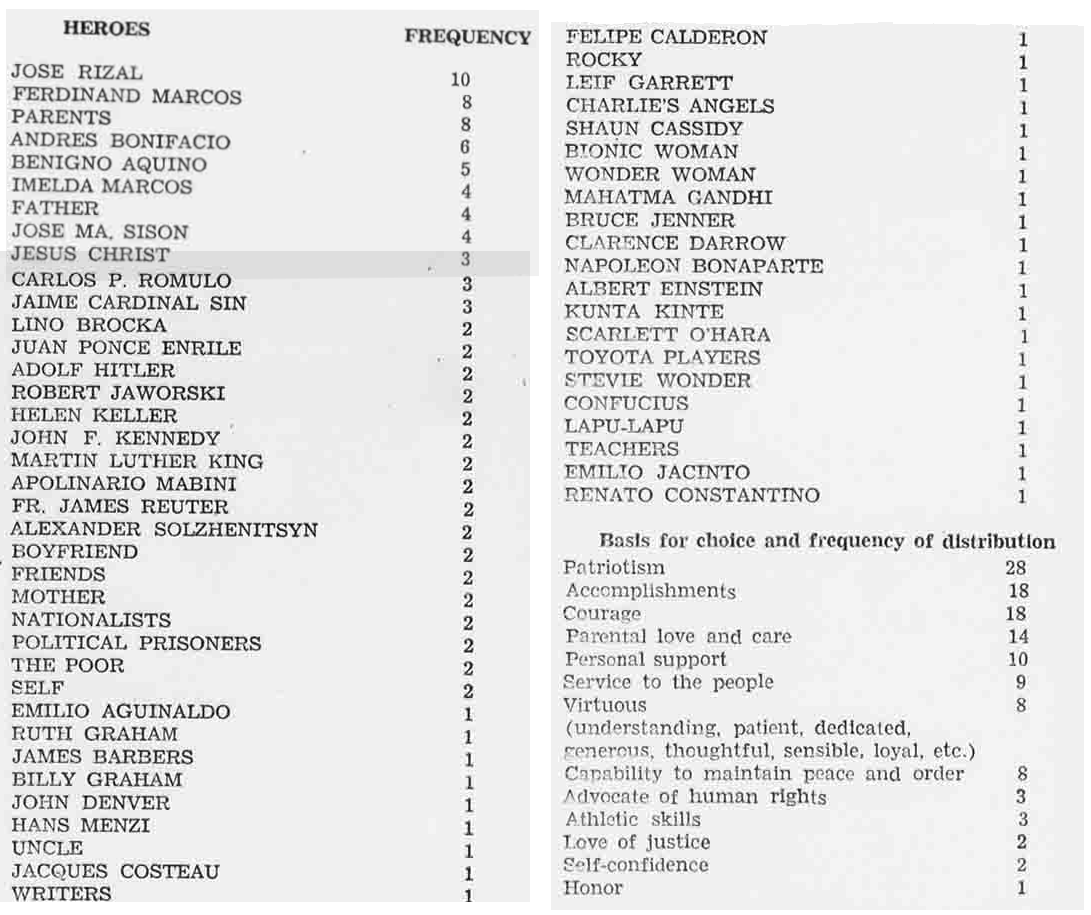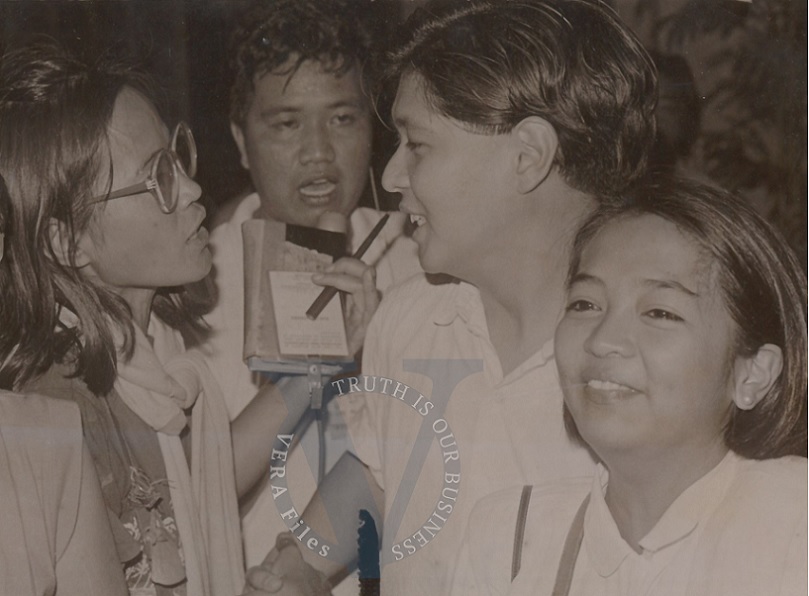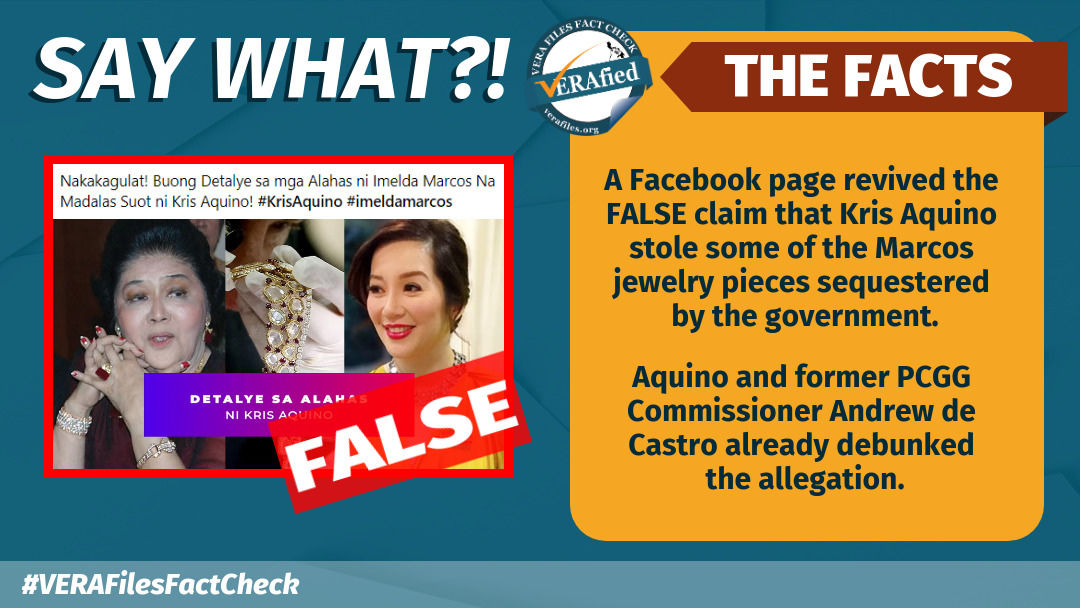Signing of an agreement for the PGH expansion and rehabilitation project, 1982.
In the wake of the fire that hit the Philippine General Hospital (PGH) on May 16, Foreign Affairs Secretary Teodoro “Teddy Boy” Locsin Jr. thought it relevant to tweet about the relationship of former first lady Imelda Marcos with the government-owned medical facility.
“One of the best things Imelda did was rebuild PGH better. She had no authority but she did it. That was one of the charges against her. I think it is still there. Technical malfeasance is impossible to get dismissed or no one bothered to thank her,” Locsin said in response to a tweet by Demontitang Aczar of Manila. The Twitter user was calling on the Duterte administration to “step up and do what needs to be done to repair [PGH] and renovate it.”
The Secretary’s tweet was picked up in a story published by the Manila Bulletin which, according to the social media monitoring tool CrowdTangle, resonated with at least a dozen pro-Marcos Facebook pages and got more than 2,300 interactions on Facebook alone.
But Locsin’s claims need further examination, especially with regard to the beneficence of Imelda who was convicted for graft in 2018 for her role in the expansion and rehabilitation of PGH during her husband’s term as president. The Sandiganbayan ruling, which concluded that ill-gotten funds were funneled to foundations whose ultimate beneficiaries were the Marcoses, remains under appeal.
The PGH project is often described as an initiative of the former first lady but whatever Imelda did for the hospital is tainted, at the very least, with financial mismanagement or worse, outright fraud.
Given her power and influence at the time —she was both chief executive of the Metro Manila Commission and head of the Ministry of Human Settlements — Imelda overhauled PGH using bizarre and infeasible ways to pay for the debt that funded the project.
Locsin claims that although Imelda “had no authority,” she still went ahead with the upgrading of PGH. According to the Official Week in Review: August 3 – August 9, 1981, published in the Official Gazette, Imelda authorized the construction of a 21-story hospital building to replace the existing PGH structure, apparently in her capacity as Minister of Human Settlements. The entry noted that Imelda approved the plan in a meeting with then University of the Philippines President Edgardo Angara and hospital department heads of the UP College of Medicine and several cabinet ministers. During that meeting, it was also agreed that the PGH project would be financed by the Social Security System (SSS).
Less than three months later, on November 1, Imelda set up the PGH Foundation Inc. (PGHFI) with herself as chair to make PGH “a premier hospital for all kinds of people, rich and poor,” according to the Official Week in Review. No accounting for the funds received by PGHFI has ever been publicly produced.
PGHFI was the foundation involved in the “technical malfeasance” case that Locsin may have been alluding to in his tweet. He may have forgotten that in 1998, Imelda had been acquitted of all but one charge related to the foundation. Details of that case show that a lot remains unresolved regarding Imelda’s use of PGHFI for “creative financing.”
According to Dr. Gloria Aragon, PGH director from 1979 to 1983 in her memoir The Road I Travelled, the UP Board of Regents approved the planned SSS loan in July 1982. The following month, a contract was signed in Malacañang by Imelda, Angara, and the contractors for the project which was to be funded by a 25-year SSS loan and completed within 1983.
An article in the October 1983 issue of the National Economic Development Authority periodical Philippine Development noted that a P450 million SSS loan would finance a “new seven-story main building” of PGH which would begin construction in 1985.
That article was not principally concerned with the PGH project. It was actually a feature article about the first line of the Light Rail Transit (LRT) system under constructed in Manila at the time. The PGH-SSS deal was mentioned because “[that] early, the government [had] decreed that income from the commercial centers at each of the LRT stations will be used to pay off the loan for the expansion of the [PGH] and to maintain the hospital.”
It was a curious scheme.
To pay off a massive debt that PGH would be saddled with, the income of another government facility, the LRT— itself built through even more massive loans from foreign creditors —would be directed to service the loan of the non-profit public hospital. This arrangement was approved despite the fact that, besides the loans it had to pay, the Light Rail Transit Authority (LRTA) also needed to pay a guaranteed income to a private operator contracted to run the line. As stated in the Philippine Development article, the LRTA (rightly) expected that costs would “exceed revenues in the first few years of operation” of the rail line.
The PGH debt was going to be paid off from the income of a mass transit system operating at a loss.
The deal was a head scratcher, but not difficult to facilitate with Imelda in charge of PGHFI as well as chair of the LRTA, established by President Ferdinand Marcos via Executive Order No. 603 on July 12, 1980.
In June 1984, about half a year before the LRT started to service the public, PGHFI and the LRTA made the deal official. The LRTA leased to PGHFI two vacant lots adjacent to the LRT stations in Pasay and Manila. According to Dans v. People, promulgated by the Supreme Court on January 29, 1998, the lease on the two properties were P102,760 and P92,437.20, respectively. Within the same month, PGHFI subleased the lots. The Manila lot was rented out for P199,710 a month to Joy Mart Consolidated Corporation, owner of the Isetann Department Store building that used to stand on the very same lot before it was demolished to give way to the LRT. The Pasay lot went to Transnational Construction Corporation, whose president was Marcos crony Ignacio Gimenez, for a monthly rent of P734,000.
After the EDSA Revolution, in 1992, Imelda Marcos and former transportation minister Jose Dans were charged separately for holding top positions in both the PGHFI and the LRTA and entering into lease agreements that had “‘terms and conditions manifestly and grossly disadvantageous to the government.’”
Both were acquitted of the first set of charges because they were not given “adequate notice of the acts for which [they] could be held liable under the law.” The Sandiganbayan also found nothing wrong with Imelda and Dans entering into the LRTA-PGHFI lease agreement even if they were, as per the Supreme Court, “playing both ends.”
But on September 24, 1993, the Supreme Court declared Imelda and Dans guilty of entering into the grossly disadvantageous sublease agreements, noting that even conservative evaluations showed that the properties could have been leased out for at least P 500,000 more. The High Court concluded that Imelda “generated a situation where the LRTA, a government corporation, lost out to the PGHFI, a private enterprise headed by Marcos herself.”
On appeal, the Supreme Court acquitted Dans of all charges in January 1998 as his signature did not appear in any of the sublease agreements, buttressing his claim that he did not even know about the sublease deals where these were sealed. Imelda, on the other hand, was only acquitted of the charge on her involvement in the Manila sublease contract because she did sign for PGHFI in all the subject lease deals.
On further appeal, Imelda was cleared of all charges nine months later. The Court ruled that notwithstanding her numerous roles in government, Imelda only entered into the agreements in her private capacity as chair of PGHFI and that there was a “fatal” procedural flaw” in the case.
Lost in the discussions on property valuation and procedural technicalities was the matter of whether any funds from the lease agreements actually went to PGH. No evidence was ever presented to prove that funds generated from the lease agreements were ultimately for charitable purposes as claimed by Imelda.
There is likewise no proof that any of the funds received by PGHFI were ever utilized to pay off PGH’s loan to SSS. In a 1990s interview with a journalist, a former hospital director said that PGH never received any funds from PGHFI. Another PGH director and other UP officials claimed, through a congressional representative during a 2015 budget hearing at the House of Representatives, to have no knowledge of PGHFI and its contributions to the PGH. They did know about the PGH Medical Foundation which was founded in 1997 without the participation of Imelda Marcos. This is the same foundation referred to by more recent headlines talking about donations to and activities of a “PGH Foundation.”
If the PGHFI never actually helped to pay off the loan for PGH’s expansion and rehabilitation, then where else was the payment for that debt supposed to come from, besides other existing sources of PGH funds? Among the documents seized from Malacanang after the Edsa Revolution are those regarding a plan to turn PGH into an “independent corporation,” submitted to President Ferdinand Marcos by then PGH director Salvador Salceda. Essentially, the plan would have made PGH financially and administratively independent from UP—Salceda wanted it “attached to the Office of the President, Republic of the Philippines”—but contractually kept it the teaching hospital of the UP College of Medicine. Being independent would mean that it could name facilities after donors without the approval of the UP Board of Regents. Angara opposed the plan; in a letter to President Marcos dated September 20, 1985, Angara said that this move would “seriously jeopardize the quality of patient care in PGH” and that relying on an agreement would not “effectively preserve the current synergistic relationship [of the proposed PGH Corporation] and the [UP] College of Medicine”, even potentially becoming “the cause of deterioration in the long run.” Had the plan been implemented, perhaps PGH would have been able to diversify its funding sources, but at the cost of further making it subject to the whims of the Marcoses, and potentially those of private interests.
Letter of Angara to Imelda by VERA Files
Letter of UP President Edgardo Angara opposing a Marcos-era plan to turn PGH into an independent corporation.
One could say that all’s well that ends well in this case since the seven-story building—now known as PGH’s Central Block — was operational by 1989, and renovations of other PGH facilities were completed the following year. Aragon noted in her memoir, however, that much of the rehabilitation project was not realized. Several other infrastructural additions and renovations were made after the Marcos regime, including the Out-Patient Department building constructed in 1989.
But the SSS debt continued to haunt PGH. According to a 1987 issue of Philippine Development, the PGH expansion and rehabilitation project was supported by a P200 million SSS loan — less than half of what Imelda and company wanted—and “a government grant through the Department of Public Works and Highways,” a much more reasonable funding source. The interest and penalties on the loan, which had ballooned to P534 million, were condoned by SSS after lengthy negotiations in the early 2000s.
According to the July-September 2000 issue of the UP Gazette, former president Joseph Estrada approved the condonation in September of that year. By that time, the outstanding principal balance of the P200 million loan had reached a whopping P190,633,488.92 and less than P9.4 million had been remitted to SSS by UP-PGH, millions less than what PGHFI should have earned prior to the ouster of the Marcoses in 1986.
The Imelda and PGH saga is a cautionary tale. The PGH is a vital institution, a fact made even more apparent by the pandemic. It cannot rely on harebrained financing schemes, the whims of first ladies, or discretionary funds of chief executives. As Aragon noted, “inadequate financing and logistic support under which the hospital had been functioning on [during the Marcos regime]” should have been corrected.
The current PGH director, Dr. Gerardo Legaspi, has said that it would take three to four months to restore the operating room supply area of the hospital that was hit by the May 16 fire. Surely, if the PGH regularly had adequate funds to meet such contingencies, it would not take that long.
What then do we have to thank Imelda Marcos for?
(Miguel Paolo P. Reyes is a university research associate at the Third World Studies Center, College of Social Sciences and Philosophy, University of the Philippines Diliman. This piece is part of the Center’s on-going research program, the Marcos Regime Research.)
The views in this column are those of the author and do not necessarily reflect the views of VERA Files.





